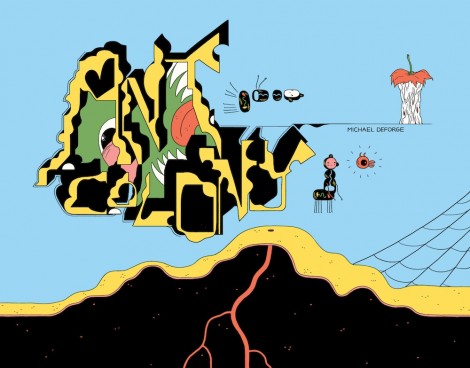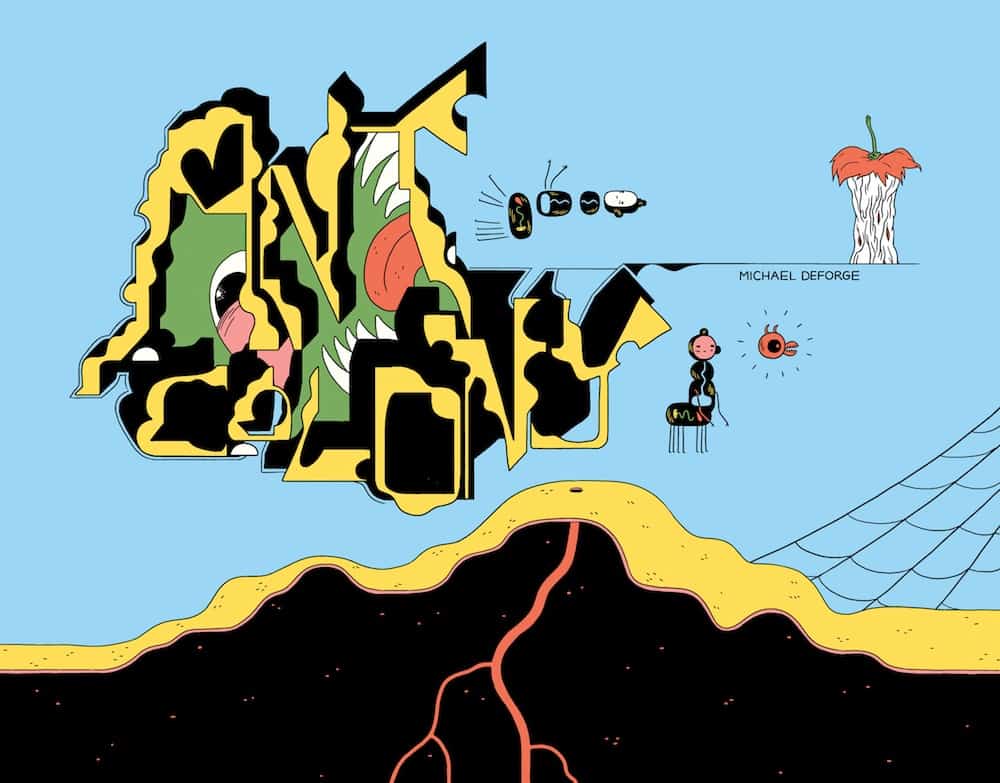Michael DeForge, a Canadian comic book artist, most famous for his work as a character designer on Adventure Time, recently released a new comic book called Ant Colony. Drawn in DeForge’s signature surrealist style, Ant Colony features centipedes that look like stretch-SUV limos, ants with their organs drawn on the exterior of their bodies, and a prominent use of mustard yellow.

Ant Colony begins as a story chronicling a black ant colony attempting to inseminate their queen, while the self-aware citizens deal with problems such as relationship issues, illicit romances, and the pains of growing up.
Clearly, these ants are not the typical picnic invaders; they have fully formed personalities akin to humans. They can be “blowhards,” DeForge admits. Some are selfish, while others are extremely caring. The ants love, hate, mourn, express guilt, philosophize, and have sex — which, as DeForge points out: “informs the politics, hierarchies and personal interactions of Ant Colony just as much as it does…[in] the actual world that we live in.” Although there are brief moments when DeForge draws the reader’s attention back to his character’s original nature (when the ant prophet announces that “the world’s largest earthworm was measured to be over 670 centimeters in length,” and his travelling companion asks: “What is a centimeter?”), it is clear that these ants are more like humans than most readers would be comfortable with.
The graphic novel quickly morphs into a post-apocalyptic story when the colony is devastated by a war with its rivalry red ant colony, as well as a random attack by a magnifying glass seemingly used by the hand of God. This is when the true meat of the novel kicks in.
While there are many genre traits within post-apocalyptic stories that DeForge employed from the beginning of the novel — such as the existential feelings of hopelessness among the ants, wanting something more than reproduction — he also uses other tropes to weave a timely philosophical story about the hope to rebuild amongst the wreckage. One of his characters attempts to build a new colony right beside a dangerous spider web and crystals of Sweet’N Low, poison to ants. The brief turn to cannibalism by some characters in the wake of the disaster — as well as the four main characters’ attempt to sexually enslave an infertile female ant to become their new colony’s queen — mix elements of Cormac McCarthy’s post-apocalyptic novel, The Road, and Danny Boyle’s zombie apocalypse movie, 28 Days Later, even though DeForge said, “I can’t say there were many other pieces of post-apocalyptic fiction on my mind.” Despite this, Ant Colony falls within a relatively new fad of questioning: what will happen to a world — any world — after complete ruin?
Ant Colony proves that humans have the astounding ability to sympathize with something as insignificant as an ant through DeForge’s masterful employment of post-apocalyptic genre traits, and his beautifully colourful, cartoon-like style.


